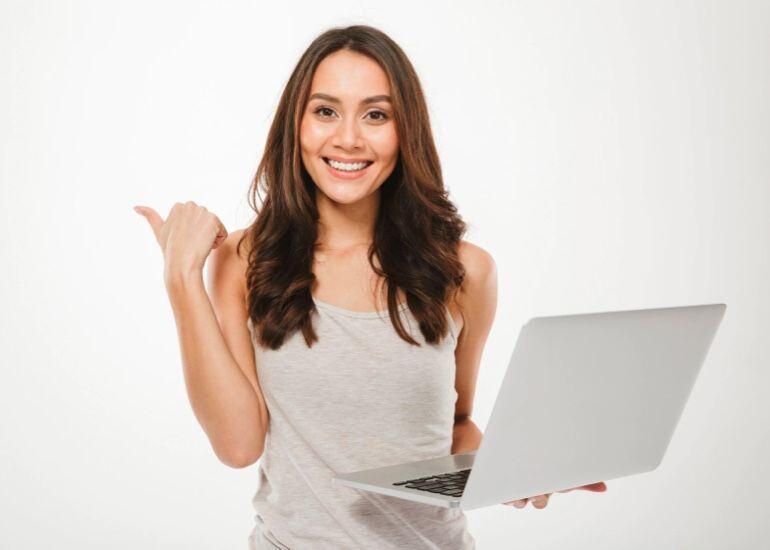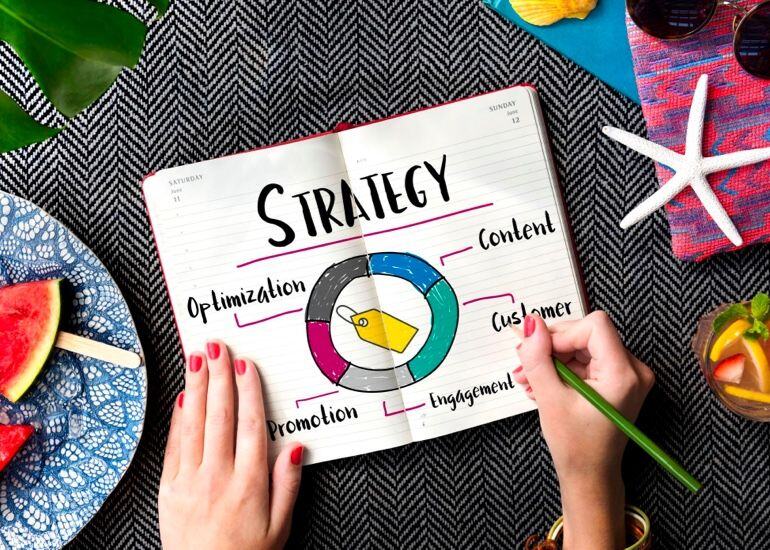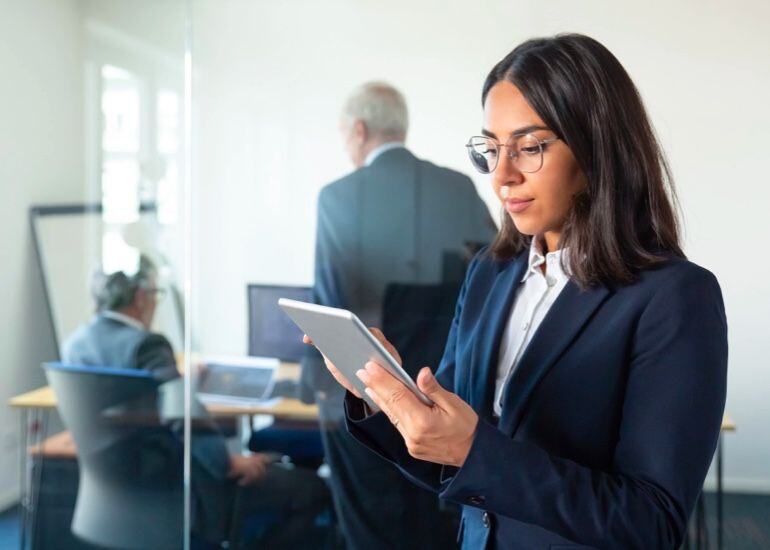A social media marketing funnel is an essential process that you can use to optimize your marketing efforts. It allows you to trace the stages your leads go through as they transition from being unfamiliar with your brand to becoming a prospect and eventually converting into a devoted customer.
When creating an effective social selling strategy, you need to understand the different sales funnel stages and phases of a marketing campaign. This will help you create the best marketing campaigns and ensure you're reaching the right people. This blog post is a social media marketing for dummies guide that will discuss the five stages of a social marketing process and how you can improve your social media marketing strategy, funnel stages, and transition marketing at every step!
What are the Stages of a Social Media Marketing Funnel?
The five stages of a marketing process are Awareness, Interest, Engagement, Action, and Advocacy. The different tasks at the actual stages work together to move your leads through the marketing funnel. The exact terms can differ depending on which marketing experts you ask, but the main overview looks something like this: outsource social media
-
Awaken the curiosity of your target audience
-
Educate them about your product or service
-
Engage with them and build a relationship
-
Convert them into paying customers
-
Retain them as loyal fans and promoters of your brand.
In the first stage, Awareness, people are unaware of your brand. In the second stage, Interest, people become interested in your brand. In the third stage, Engagement, people interact with your brand. In the fourth stage, Action, people take action, usually by making a purchase immediately or in the future. In the fifth stage, Advocacy converts customers into advocates for your brand.
Here's a visualization of how a social media marketing funnel works:

Awareness
The first stage of the social media marketing funnel is awareness. In this stage, potential customers encounter your brand for the first time. They may see a post online, an ad, or hear about you from a friend. This can happen through paid advertising, organic reach, or word-of-mouth. Getting people to notice your brand is essential.
Interest
The Interest stage is when your prospects start to become more familiar with your brand and what you have to offer. This is where you can begin to build relationships with potential customers.
Engagement
The Engagement stage of the customer journey is when people are actively interacting with your brand through likes, comments, shares, subscribers, and more overt engagement like DMs and chatbots.
Action
The Action stage is when customers take action, usually by making a purchase. In this stage of the sales funnel, it's important to create content that will drive prospects to buy your product or service. This can be achieved through online product demonstrations, a new customer discount, and other forms of social media marketing planning campaign.
Advocacy
The Advocacy stage is when satisfied customers become vocal brand ambassadors and promote your brand to their network. In this stage, it's essential to encourage people to share your brand with their friends, family, and followers.
Now that we've gone over the different funnel stages, let's discuss how you can optimize your markeitng campaign strategy for each step!
What do the Most Successful Social Sellers do Differently?
The best way to create a funnel for effective social selling is to consider the same stages of a traditional sales funnel and how they apply in a social media setting. The same basic formula applies: Awareness, Interest, Engagement, Action, and Advocacy. However, a good marketing firm understands that social selling relies heavily on building online relationships with potential customers, so the tasks at each stage will be slightly different. Here's an example of how to use a social media marketing funnel:
As you can see, social selling attempts to build relationships with potential customers at each stage of the buying process. This is done by developing sales strategies that are creative and personal. For example, in the Awareness stage, you can use Facebook advertising to target potential customers in your demographic.
In the Interest stage, you can use content development strategy such as blog posts and infographics to educate potential customers about your product or service. In the Engagement stage, you can use social media platforms, such as Twitter and LinkedIn, to build relationships and answer customer questions. And in the Action stage, you can use effective social selling techniques, such as providing a discount for first-time customers, to close the sale.

How do Social Media Marketing Funnels Differ from Traditional Sales Funnels?
Although both rely on the same basic set of principles, they differ in a few significant ways:
-
Social platforms are used at each funnel stage to target users and transform them into clients.
-
Content is more personal and informal than traditional marketing collateral.
-
Social selling relies heavily on building relationships with an online community.
Consulting companies like McKinsey also note that while the traditional sales funnel model is linear (which has 3 stages of marketing funnel; beginning, middle, and end), the social media marketing funnel is more nonlinear. This means that it doesn't have a defined beginning or end. Instead, it's always evolving as new leads come in and old leads move through the different stages.

Digital-based funnels also have the advantage of connecting with potential customers at any time and in any place.
While a traditional sales funnel with three stages assumes that nearly every transaction eventually leads to a purchase, this is not always the case with online marketing. In fact, it's common for people to engage with your brand without ever making a purchase. That's why it's important to focus on creating long-term brand advocates rather than one-time buyers.
The social media marketing funnel is also wider with a 5 stages marketing funnel than the traditional sales funnel with 3 stages of marketing. This is because there are more touchpoints. For example, someone might see a Facebook ad, click on it, and then decide to follow your brand on Instagram. The social media marketing funnel is more efficient than the traditional sales funnel because it doesn't require as many resources.
The number of stages also differs from the traditional sales funnel. In the traditional funnel, there are four stages: Awareness, Interest, Decision, and Action (also known as AIDA). However, there are five stages in the social media marketing funnel: Awareness, Interest, Engagement, Action, and Advocacy. This is because social platforms provide more opportunities for customers to interact with brands.
Finally, the platforms and tools used in social media marketing are different from those used in a traditional funnel. For example, you might use a Facebook business page to reach potential customers in the Awareness stage. In contrast, you'll use blog posts and social media sales funnel infographic to educate them about your product or service in the Interest stage.
If you want to be successful with your social media sales funnel, you need to be able to change your strategy and continuously experiment with new platforms and tactics. For example, Snapchat didn't exist a few years ago, but now it's one of the most popular platforms, likewise, Facebook which is a popular platform and has a Facebook marketing funnel 3 stages you can employ if using this platform. This is why you need to stay updated with the latest changes in digital marketing and follow the experts (like SocialSellinator).
One of the most important things to remember is that a social media marketing funnel is not a one-size-fits-all solution. Every business has its own selling process. However, by understanding the basics of how the funnel works, you'll be able to create a strategy that is tailored to your business and maximize your chances of success.
Let's look closer at each of the five stages of a social media marketing sales funnel and identify one or two tactics that can be employed in different social media selling processes.
Optimizing Awareness
The key to this stage is reach. You want to reach as many people as possible and get them to develop familiarity with your brand to kickstart your campaign goals. You need to make sure that your branding is consistent across your social channels. You want to create content that will pique people's interest and get them to notice your brand through creative and solid marketing campaign plan on social media. It's also crucial to make sure that your website is optimized for SEO so that google search engine results are sending leads to your landing page.
Social selling attempts to reach potential customers where they spend most of their time: on social media. People are always connected to their social media networks, which gives you the ability to reach them 24/seven.
It's also crucial that you're aware of the latest trends on each social media platform - these change year by year, so be sure to check out our cheatsheet for 2023. Social listening, local targeting, and hashtag social media marketing campaigns are critical things to concentrate on while building brand awareness.
Optimizing Interest
This second stage of the customer journey is when the prospects start to take notice of your brand and become interested in what you have to offer them. It's also known as the Consideration stage.
The key to this stage is education. Your content needs to be educating prospects about your product or service and how it can benefit them. This can be done through blog posts, infographics, ebooks, webinars, and other forms of content marketing.

Establish yourself as an authority in your industry. You need to consistently be creating social media content that is compelling and relevant. Try to use a content calendar to plan and map out your strategy so that you're not just randomly posting things. Once you have a marketing process and system in place, it'll be easier to track what's working and what's not.
During this stage, other things to consider are using lead capture forms, creating lookalike audiences, and retargeting ads. These elements will help you move potential customers further down your sales funnel.
Pain points are also a crucial aspect to consider in this stage. What potential problems can your product or service solve for the customer? Be sure to address these in your content to capture leads who are interested in what you have to offer.
Note that most prospects won't be ready to purchase immediately at this stage of the funnel. They're considering their options and comparing you to your competitors. Therefore, you need to continue providing valuable content and keeping your brand top-of-mind.
Finally, once you've captured a lead, follow up in a timely manner. A great way to do this is through automated email marketing. You can set up an email drip campaign that will send a series of emails over time, each with its specific purpose.
Optimizing Engagement
Did you know that 44% of salespeople give up after just one rejection? That's a lot of lost sales, all for the sake of building relationships and better nurturing your leads until they're ready to purchase.

Tried-and-true methods like customer testimonials, engagement on Facebook groups, and direct messages can be effective at this conversion stage of the social marketing funnel. You also need to have a social media presence by being active on social media platforms, such as Twitter and LinkedIn, and answer any questions or concerns your customers may have.
You can also use this stage to build relationships with influencers and brand ambassadors. Social marketing campaign and social media contests are another way to increase engagement and loyalty among your customer base.
You may also like: Cost of Social Media Management
Optimizing Action
The penultimate stage of the social media marketing funnel is when the prospect takes action and decides whether or not they want to buy your product or service. The key to this stage is conversion. You need to be able to turn your potential customer through qualitative research into a paying one through effective selling techniques.
There are a few things that you can do to increase the likelihood of conversion at this stage. You've got to offer a great product. Still, you'd be surprised how many eCommerce sites fail to stick the landing due to poorly designed checkouts, confusing return policies, or clunky user interfaces.
You also need to offer various payment options and make the process as easy as possible. The easier it is for customers to buy from you, the more likely they are to do so. Even if you only have limited resources, anyone can use a service like Shopify, which allows you to set up a completely customizable online store in minutes.
You want to make it as easy as possible for prospects to convert into customers. So consider using platforms that have native social commerce integrations. This way, customers can buy your products without ever having to leave their favorite social media platform.
Finally, don't forget the power of a good old-fashioned call-to-action (CTA). A CTA is a simple statement or even a Buy Button that tells customers what to do next.
Optimizing Advocacy
Even after closing the sale, the work doesn't stop there. To keep your customers happy and engaged, you need to continue to provide them with valuable content and support. This is the stage where long-term brand advocacy is built.
Stay in touch with your customers even after they've made a purchase. You can do this by sending them helpful tips or information about other products they might be interested in. You can also use this opportunity to upsell or cross-sell related products.

Approach power users and influencers. Retain them as loyal fans and promoters of your brand. Try to build relationships with these people and offer them incentives, such as exclusive discounts, freebies, or early access to products. Finally, don't forget to ask for reviews and testimonials. It will do a lot of the work for you in marketing and promoting your brand.
Video testimonials are a great way to show potential customers the success others have had with your product or service. Being championed by existing customers online is valuable social proof, which can increase conversions at every stage of the funnel. It's an excellent way to increase confidence in your brand and build trust.
Conclusion
By now, you should have a good understanding of the social media marketing funnel and how it works. Keep these stages in mind as you develop your own social media marketing planning process and social media management. Remember to optimize each stage of the funnel for maximum impact, and you'll be well on your way to a successful marketing campaign.
If you have any questions or want to learn more, please contact us. We assist companies by identifying their consumers, creating content that connects, and crafting strategies that drive results.








